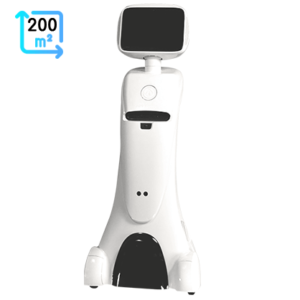Simultaneous Localization and Mapping (SLAM)
Simultaneous Localization and Mapping , also known as SLAM, is the process of collecting data from the physical world, with the help of numerous sensors installed in the robot. Subsequently, This data is generated into maps for later navigation. SLAM makes it easier for the robot to localize itself, interpret data through visual points, build a map and use it to navigate simultaneously.
when a person tries to identify his way around an unknown place. The first step is to look around to find familiar markers or signs. Once The person recognizes a familiar landmark, he can figure out his whereabouts in relation to it. The more that person observes the environment, the more landmarks will become familiar to him and he will begin to build a mental image, or map, of that place. He may have to navigate this certain environment several times before becoming familiar with a previously unknown place. In a related way, a SLAM robot uses its sensors (Sonor, laser or cameras) to map environment while figuring out its own location.
The popularity of the SLAM problem is correlated with the emergence of indoor mobile robotics. The use of GPS has no room to bound the localization error for indoor usage, such as Telepresence, service and disinfection robots. Additionally, SLAM offers an appealing alternative to user-built maps, showing that robot operation is approachable even in the absence of a purpose specification localization infrastructure.
Reference: Teaching Robots Presence: What You Need to Know About SLAM
[launchpad_feedback]
Disclaimer: The information provided in this article are for explanatory purposes only. SIFSOF is not responsible neither for the misuse nor for the wrong or random use of the robots.


